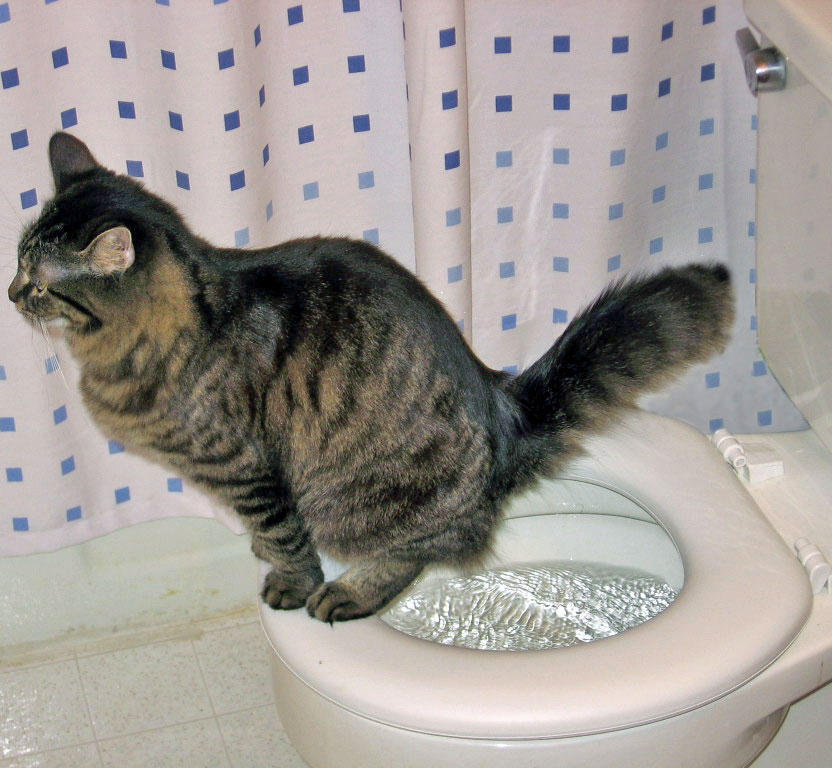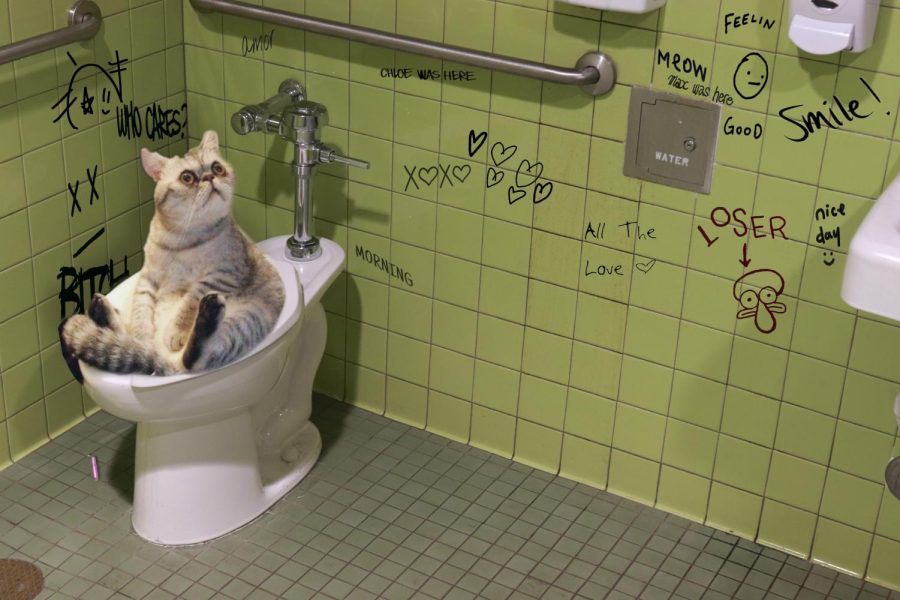How You Need to Avoid Flushing Animal Waste Down the Toilet
How You Need to Avoid Flushing Animal Waste Down the Toilet
Blog Article
Just how do you really feel about 10 Things You Should Never Flush Down The Toilet?

When it comes to disposing of waste, specifically animal waste, lots of people often turn to the hassle-free choice of flushing it down the bathroom. Nonetheless, this seemingly simple solution can have major effects for the environment and public health. In this post, we'll check out why flushing pet waste down the toilet is a negative idea and supply alternative techniques for correct disposal.
Introduction
Proper garbage disposal is crucial for preserving ecological sustainability and public health. While it might seem harmless to flush animal waste down the commode, it can bring about various issues, both for the environment and human well-being.
Dangers of flushing animal waste
Environmental effect
Purging pet waste presents hazardous bacteria and pathogens into waterways, which can negatively affect marine communities. These microorganisms can infect water sources and damage marine life, interfering with fragile ecosystems.
Public health problems
Animal waste contains unsafe germs such as E. coli and Salmonella, which can pose major wellness risks to human beings. Flushing animal waste down the commode can pollute water products, resulting in the spread of conditions and infections.
Alternatives to flushing
Instead of flushing pet waste down the toilet, there are a number of different disposal approaches that are more environmentally friendly and sanitary.
Composting
Composting pet waste is an environment-friendly means to dispose of it. By composting, organic matter is broken down into nutrient-rich soil, which can be used to feed yards and plants.
Land fill disposal
Disposing of pet waste in a land fill is another choice. While not as eco-friendly as composting, it is a much safer alternative to flushing, as it prevents the contamination of water resources.
Animal waste disposal systems
There are customized family pet waste disposal systems readily available that safely and hygienically dispose of pet waste. These systems frequently make use of enzymes to break down waste and eliminate smells.
Steps to appropriate animal garbage disposal
To ensure appropriate disposal of pet waste, follow these steps:
Scooping and landing waste
Routinely scoop and bag pet waste making use of biodegradable bags. This stops waste from infecting the setting.
Using assigned waste containers
Dispose of bagged animal waste in assigned waste containers, such as garden compost containers or landfill containers. Stay clear of flushing it down the toilet at all expenses.
Cleaning can and family pet locations frequently
Frequently clean can and family pet areas to avoid the accumulation of waste and bacteria. Use pet-safe cleansing products to maintain health.
Benefits of appropriate disposal techniques
Embracing correct disposal techniques for animal waste supplies a number of advantages:
Decreased environmental pollution
Proper disposal techniques reduce the danger of environmental pollution, protecting rivers and ecological communities from contamination
Reduced threat of water contamination.
By avoiding flushing animal waste down the commode, click here the threat of water contamination is considerably lowered, safeguarding public health.
Improved cleanliness and hygiene
Proper disposal techniques promote much better cleanliness and health, developing a safer environment for both human beings and animals.
Verdict
Finally, purging pet waste down the commode is harmful to the environment and public health. By taking on alternate disposal techniques and following proper waste management practices, we can decrease the adverse effect of pet waste and contribute to a cleaner, healthier planet.
Why You Should Never Flush Animal Waste Down the Toilet
As a pet and property owner, cleaning up after your furry friends is important to ensure your property is clean and disinfected. However, when disposing of animal waste, many opt to flush it down the toilet. After all, it seems like the most convenient option, right? Unfortunately, this common practice can actually have harmful effects on your plumbing system and the environment.
What Comprises Animal Waste?
Animal waste refers to bodily excretions such as feces and urine from pets such as cats, dogs, and rabbits. These excretions contain bacteria, pathogens, viruses, and parasites that can harm humans and the environment. Some types of animal waste, such as feces from dogs and cats fed on processed foods, may contain harmful bacteria like E.coli, salmonella, and campylobacter. Flushing this type of waste down the toilet could pollute waterways and destroy the ecosystem.
Environmental and Physical Dangers of Flushing Pet Waste
In the environment, flushing waste can contaminate waterways, killing aquatic life and harming the ecosystem. The waste that might be considered flushing down the toilet could also adversely impact your plumbing and sewage systems in the following ways.
End Up in Sewage Treatment Plants
Flushing pet waste down the toilet can have a detrimental impact on sewage treatment plants and the overall water quality. Pet waste contains harmful bacteria and pathogens that, if not properly treated, can contaminate water sources and pose a risk to aquatic life and human health. Sewage treatment plants are designed to handle human waste and other biodegradable materials, but they are not equipped to effectively treat the bacteria and pathogens present in pet waste.
Clog Pipes
Density: Animal waste is often dense and easily gets stuck in pipes. Unlike human waste, which is designed to be flushed away smoothly, pet waste contains elements like grass, dirt, raw hide, hair, and other materials that can create blockages in the plumbing system. Potential damage: Flushing pet waste, even in small amounts over time, can lead to costly repairs. It can cause cracked pipes and other plumbing issues, resulting in the need for professional intervention. Public and private waste management systems: Flushed pet waste can also cause problems in public and private waste management systems. It can overload septic tanks and other sewage treatment systems, leading to backups. Leading to Untreated Sewage Overflows
Flushing excessive amounts of pet waste can overwhelm the sewer system's capacity to handle the additional waste load. This can cause backups and overflows, leading to untreated sewage entering waterways.
Additionally, pet waste, particularly when combined with other non-biodegradable items like wipes or litter, can create sewer pipe blockages. These blockages prevent the proper flow of wastewater and can cause sewage to back up and overflow.
Flushing Pet Waste Could Affect Human Health
In addition to environmental hazards, flushing pet waste down the toilet could be detrimental to human health. The bacteria found in animal excrement exposed to sewage might cause infectious diseases. For that reason, people whose immune systems have been weakened by particular diseases, medical treatments, or age can be in danger of disease from even the smallest bacterial exposure in contaminated water.
Alternative Ways to Responsibly Disposing of Pet Waste
The most secure and sustainable way of disposing of pet waste is by composting it. Cat litter can be useful fertilizer for your garden if you compost it safely and appropriately. However, it is essential to do this correctly to prevent exposure to the dangerous parasites that the waste might have. It is best to research before composting your pet waste, as certain toxins can persist even after the composting process is finished.
Another safe way to dispose of pet waste is by bagging and throwing it in the trash bin. Here, it is crucial to choose the appropriate bag for disposal, such as biodegradable bags that quickly decompose, reducing the carbon footprint of landfills.

We had been shown that write-up about Should you flush animal waste down the toilet from a friend on our other domain. Do you know about anybody else who is occupied with 4 Reasons Why Dog Poop Cleanup is Important? Do not hesitate to share it. Thanks a lot for taking the time to read it.
Click Here Report this page